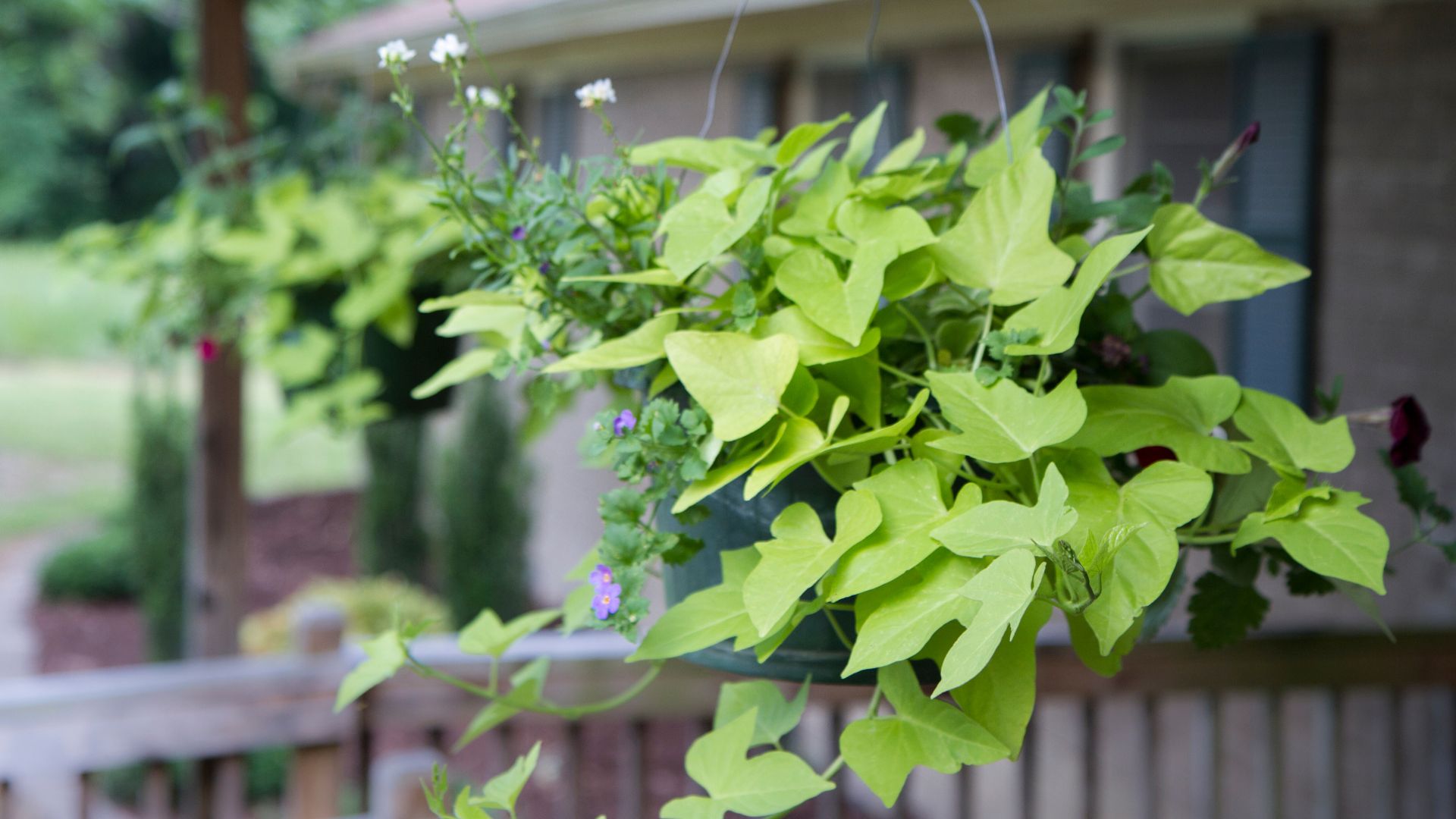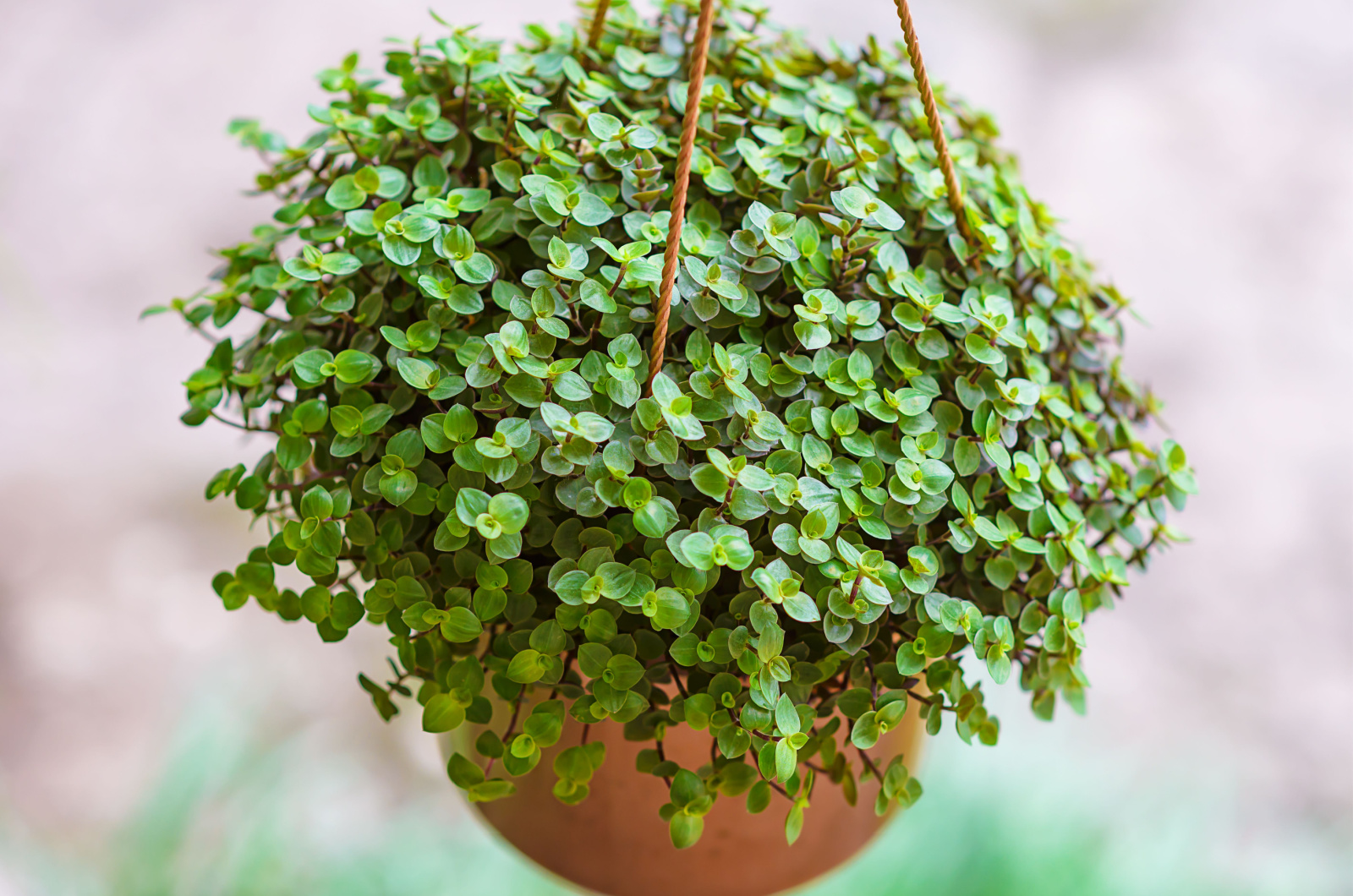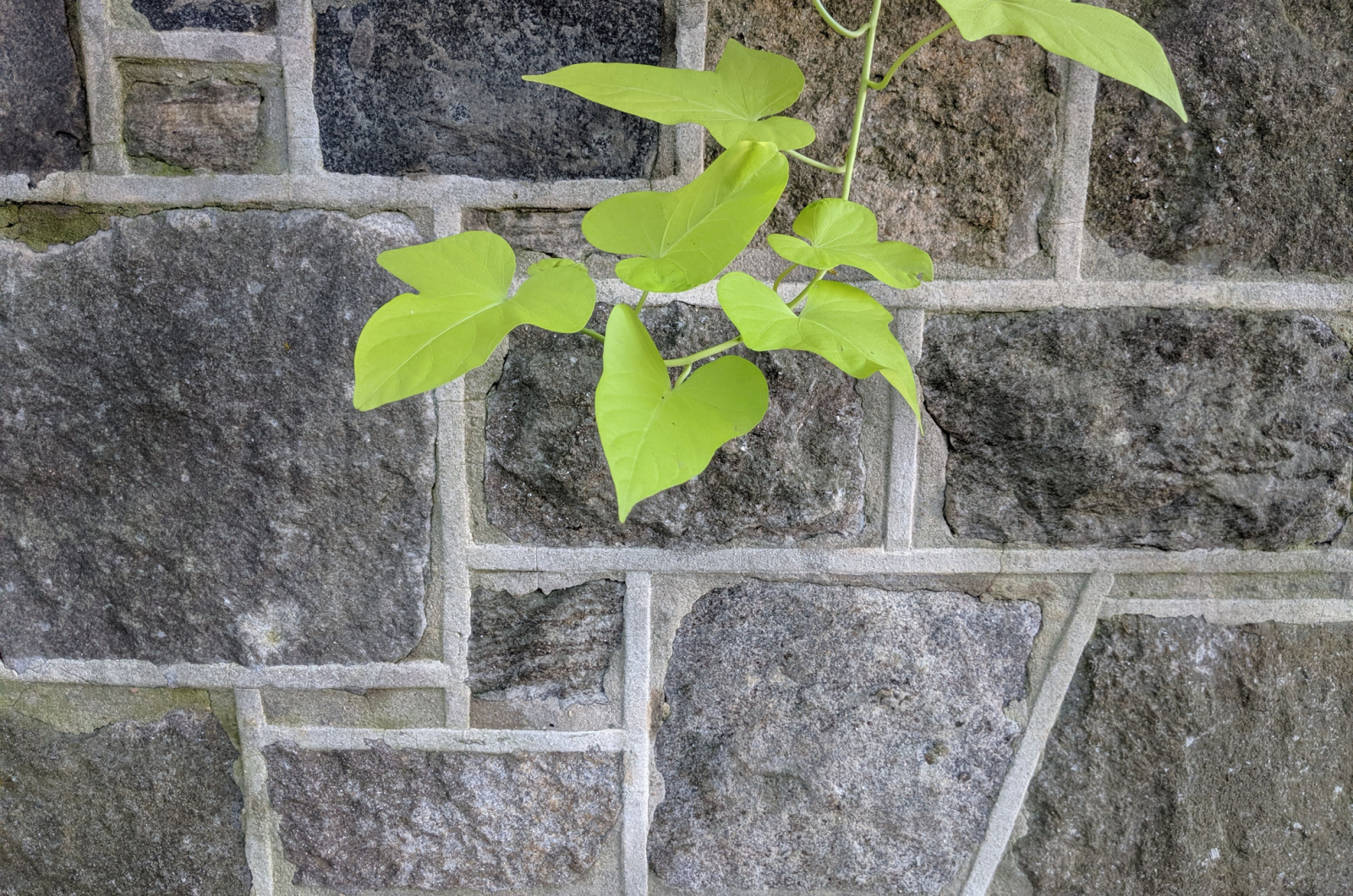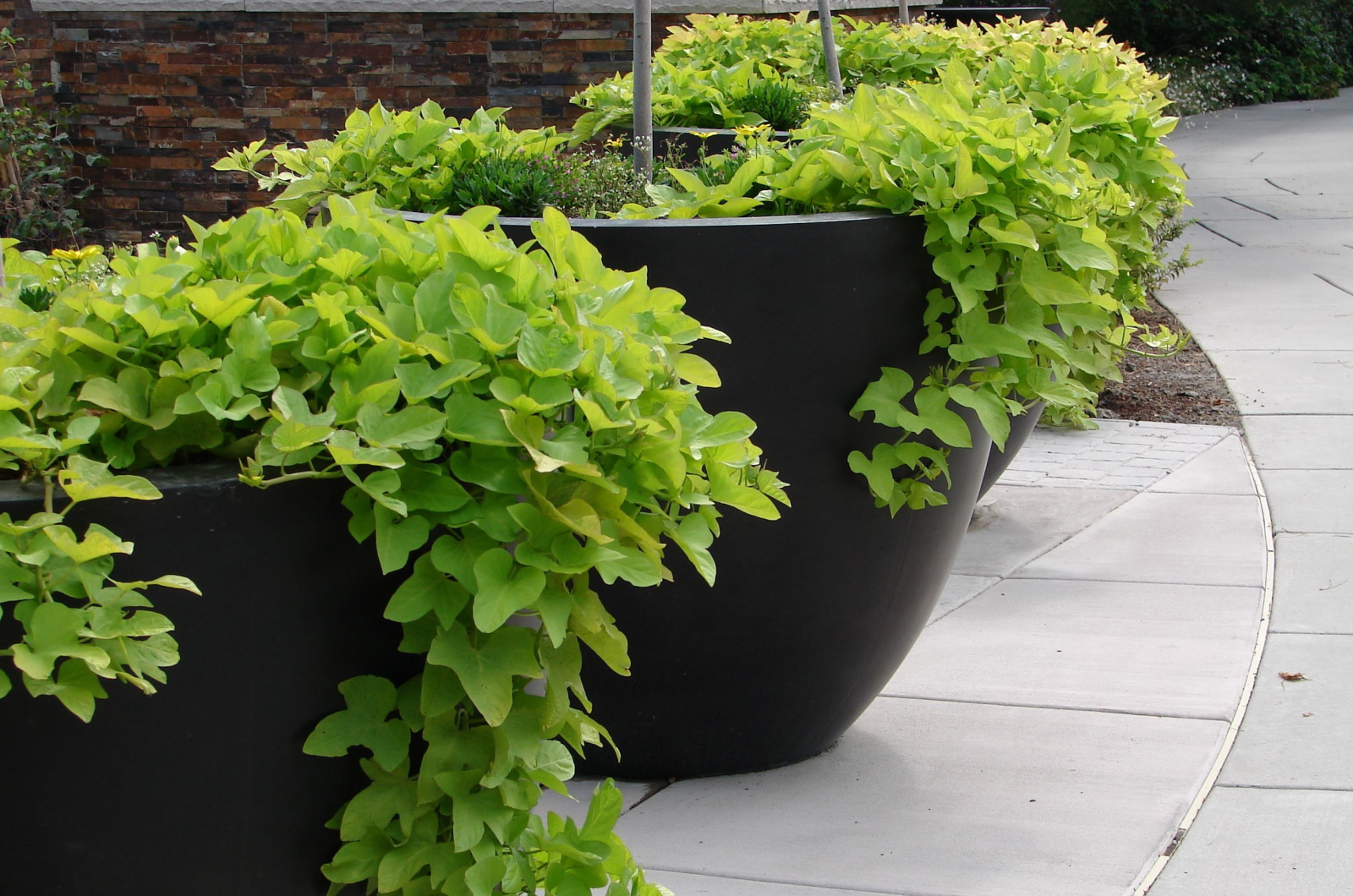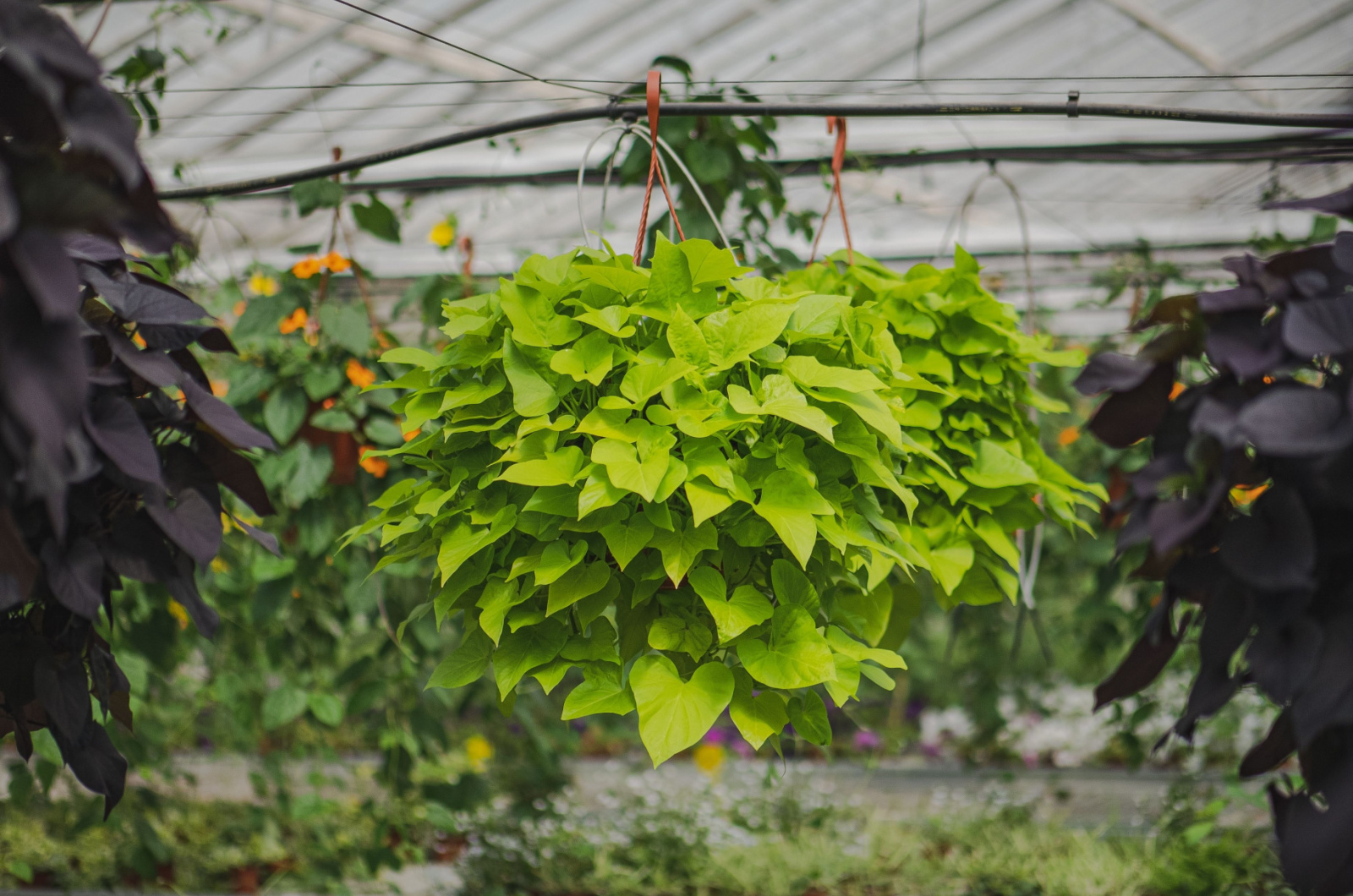Many homeowners decide to add vertical interest by growing vining plants. The most common plants used for this purpose are vining pothos.
These plants are indeed good choices but some growers may experience difficulties when it comes to keeping them happy and healthy. If you don’t want to deal with any issues, I have an alternative for you.
In this article, I’ll show you the tough vining plant that’s much easier to maintain than your dramatic pothos!
And The Plant Is…
This may surprise you but the plant is: the sweet potato vine! This plant produces delicious crops and is mainly a part of outdoor veggie gardens. But it makes a spectacular addition to houseplant collections!
The beauty of this plant lies in the ornamental vines. They feature splendid, deeply lobed leaves that come in various hues. Purple, chartreuse, and even variegated shades can be seen on the leaves. They pair perfectly with other purple-colored houseplants.
These plants look amazing when grown in hanging baskets because their vines cascade over the edges.
We can’t really compare the beauty of plants because each plant is unique in its own way. So why choose sweet potato vine over pothos? The first reason is the colorful foliage of sweet potato vines, which is perfect for plant collections that lack diversity.
The second reason is light adaptability; sweet potato vines will most likely adapt to various light levels.
Finally, sweet potato vines develop quickly and you’ll have a lush display of colors faster than with pothos.
So if you had any issues with growing pothos plants, then sweet potato vines are the perfect alternative!
Now let’s see everything about growing and caring for this spectacular plant!
How To Start It
The great thing is that starting sweet potato vines is easy and fun. And with little effort, you get a healthy and happy plant.
The first thing to do if you decide on this plant is select a suitable container. There are various options but from my experience, vases with narrower necks work best. They will ensure support for the sweet potato vines.
Additionally, you’ll have an insight into what’s going on with the roots and how they’re developing. And I must tell you that this way of cultivating plants is simply breathtaking.
The vase has to be large enough to fit the plant and there has to be enough space for the plant to be partially immersed in water.
Just like the regular sweet potatoes we plant in our veggie gardens, the vines grow from healthy crops that have eyes (buds) on them. There’s no need to search for the crops in some specific store; any sweet potato from the grocery store will work well as long as it has eyes.
After you choose a healthy crop, you should promote sprouting. The easiest way to do it is by immersing the bottom half of the crop in water. You can use toothpicks to prevent the entire plant from being submerged in water.
It’s essential for the upper part of the sweet potato to stay above the water line so that it can absorb light and air. Next, place the vase in a room where there is enough bright but indirect light.
You should soon notice new growth from the eyes of your sweet potatoes. This is actually a common procedure for speeding up sprouting in all potato species.
Once the vines are a few inches long, you should trim the tips to enhance later branching. This method will also help you have a bushier plant.
If you opt for a more structured appearance, you can stake the vines or train them to climb along trellises or similar structures.
These are vining plants and support will help you control their growth and make the plants look tidier.
How To Care For Your Sweet Potato Vine
Just like with all other houseplants, you need to ensure the best conditions for your sweet potatoes to thrive.
The first condition is light, and these plants perform best if exposed to bright indirect light. However, as mentioned, they can adapt to slightly lower or higher light levels.
When provided with bright indirect light, sweet potato vines generate the most colorful foliage.
Don’t put these plants in direct sunlight, especially during the hottest parts of the day. It will result in scorched leaves and that’s the last thing we want. You should go to another extreme as well because lack of light in sweet potato vines leads to poor growth and legginess.
I’m sure you are wondering if these plants must be grown in water all the time. Well, you can plant your sweet potatoes in a container filled with suitable soil mix. As soon as spring arrives, you can transfer them to your outdoor veggie garden.
If your main goal isn’t the harvest, then leaving your sweet potato vines in vases with water is the best choice. It’s essential to refresh the water every week to prevent root rot.
As mentioned, these beauties grow really fast and you can expect them to grow up to 10 feet each season. But this means that you’ll need to prune your sweet potato vines to maintain vigor.
Additionally, pruning will help you get a bushier plant and there’s nothing prettier than that.
Pest infestation is common in houseplants so you should be careful and inspect your sweet potato vines regularly. These plants are generally considered to be very resistant to various pests but you know the saying: better safe than sorry!
Aphids, weevils, caterpillars, and whiteflies are pests that can attack your ornamental sweet potatoes. If you notice any, simply treat the plants with neem oil or insecticidal soap.
That’s it! With these instructions, you can have healthy and thriving sweet potato vines, which are an excellent alternative to pothos!

